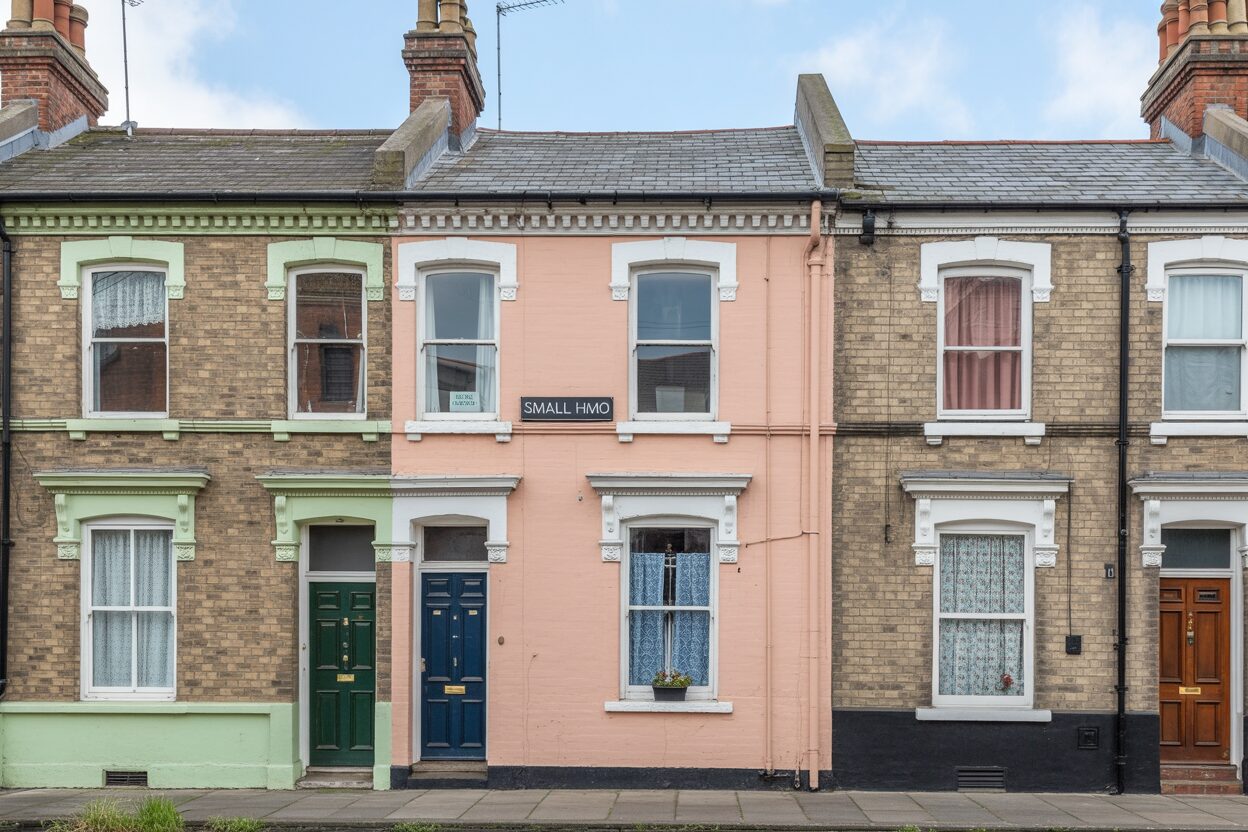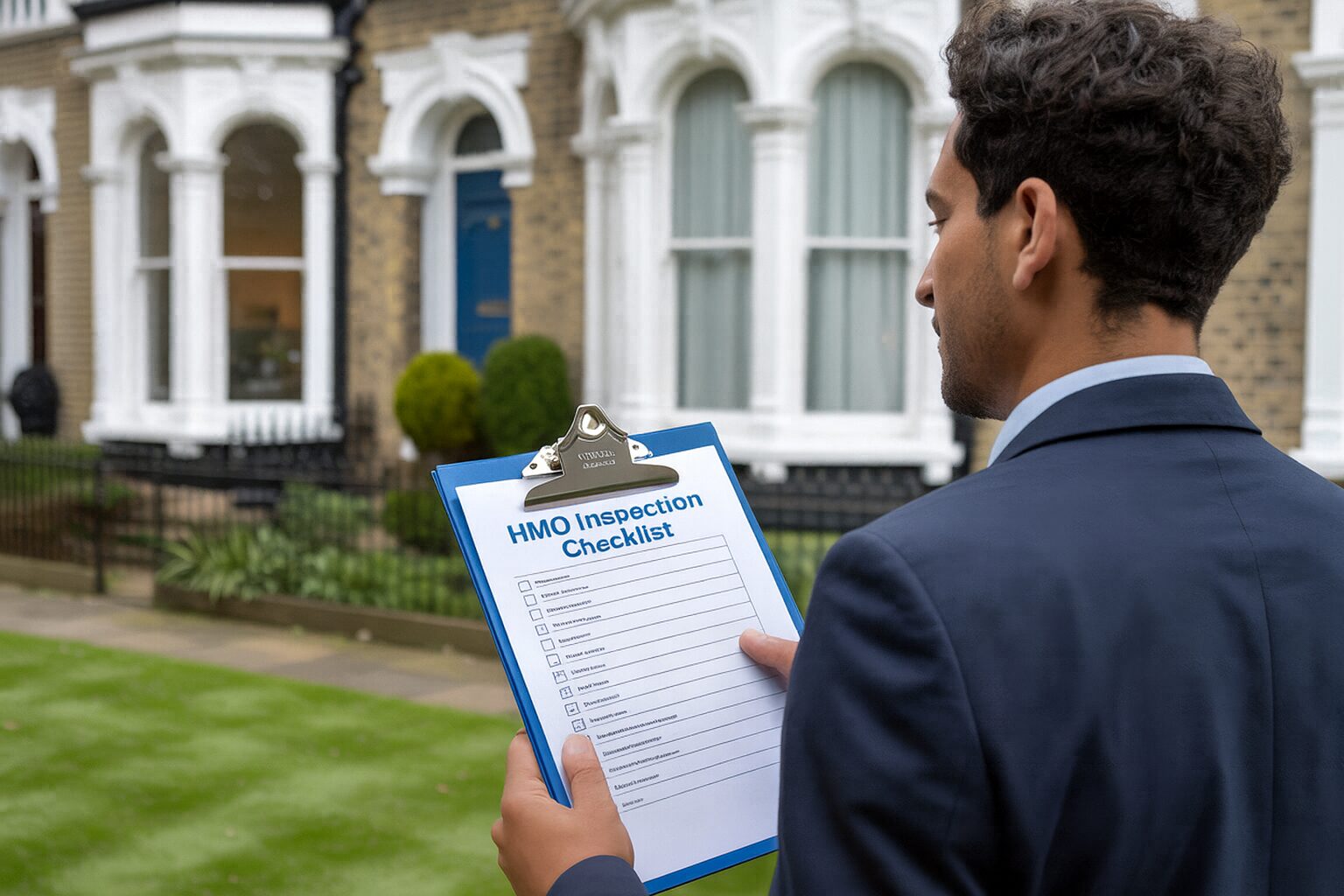
There are two definitions of small HMO in the UK. The answer you get depends on who you ask. If you ask the licensing department, a small HMO has three or four tenants. If you ask the planning permission team, a small HMO has between three and six people.
In this article, find out what defines a small HMO. You’ll also discover the different licensing and planning rules that apply depending on headcount and location. Finally, find out how to apply for a small HMO licence if you need to.
HMO Architects note: The Housing Act 2004 classifies a house in multiple occupation (HMO) as a property occupied by three or more people from different households each with individual rooms who share basic amenities like a kitchen, bathroom or toilet. A household can be a single person or people from the same family (partners, children and so on).
# What defines a small HMO?
The licensing and planning teams have the same broad definition of what a small HMO is. They only differ in the number of tenants.
On everything else, they’re in complete agreement on the characteristics of a small HMO:
| Aspect | National standards |
| HMO use (what it is) | A building (or flat) occupied by two or more households who share facilities (kitchen, bathroom or WC) is an HMO under the Housing ActSelf-contained flats with their own kitchen and bathroom are not HMOs under this test |
| Sleeping rooms: minimum sizes | If the property requires a licence, any room used for sleeping must be at least 6.51 m² (one adult) or 10.22 m² (two adults). Floor areas with ceiling height under 1.5 m don’t count.Rooms under 4.64 m² must not be used as sleeping accommodation |
| Electrical safety | You must have the fixed wiring inspected and tested at least every 5 years by a qualified person and keep the report ready for inspection (EICR) |
| Gas safety | If there’s a gas supply, you must get an annual Gas Safety check and keep records (Reg. 36 GSIUR)You must use a Gas Safe registered engineer. |
| Smoke & CO alarms | One smoke alarm on each storey used as living accommodationCarbon monoxide alarm in any room with a fixed combustion appliance (excluding gas cookers)Landlords must ensure alarms are working on the first day of any new tenancy |
| Management standards (common parts and living spaces) | Keep communal areas like stairs, landings, kitchens and bathrooms clean, safe and in good repairMaintain installations (water, gas, electric, heating) in good conditionProvide suitable refuse storage and arrangements |
| Kitchens & sanitary facilities | Provide adequate cooking, food-storage and bathroom facilities for the number of occupantsSurfaces that are easy to cleanGood ventilation |
| Refuse & recycling | All HMOs must have adequate refuse storage and arrangements for disposalFor any licensed HMO this is also an explicit mandatory licence condition |
Above are the national standards for small HMOs (larger HMOs have the same baseline requirements). Many councils publish amenity standards and add licence conditions that go further (for example, minimum worktop lengths, appliance ratios, or stricter fire measures).
Do small HMOs require planning permission?
In most of the country, converting an existing dwellinghouse (Use Class C3) into a small HMO with three to six people (Use Class C4) does not require planning permission. This is a permitted development right. A permitted development right is a planning allowance that lets you make certain changes to a property without needing full planning consent.
If a property is in an Article 4 Direction area, that right may be removed by the local council. An Article 4 Directive is a legal restriction that withdraws permitted development rights in a defined area. In this case, a conversion from a C3 to C4 use class would be subject to planning permission.
You would also need planning permission to turn any type of building that was not a C3 into a C4, for example a care home (C2) or commercial premises like a shop, office or light industrial unit.
HMO Architects note: A large HMO with seven or more bedrooms is a Sui Generis use case. So, if you wanted to convert a C3 to a Sui Generis large HMO, that would need planning approval.
Do small HMO owners require an HMO licence?
Whether you need an HMO licence for your small HMO depends on your council.
Nationally, there is mandatory licensing. This is a national requirement in England for any HMO property with five or more people forming two or more households. As a small HMO owner, this guideline does not apply to you.
You may however have to apply for additional licensing. Councils can set up additional licensing schemes when issues like poor property management and antisocial behaviour linked to small HMOs concerns them. In these cases, there is a legal requirement for you to apply for an HMO licence if the scheme covers the ward, area or property type your HMO falls into.
Finally, some local authorities put selective licensing schemes into place. These are not specific local HMO regulations as they apply to specific rented property within a specific designated area (including whole cities and towns). This may include small HMOs.
You must adhere to any scheme in force in your council. Check with your local authority to see if any restrictions apply.
How do I apply for a small HMO licence?
To get a small HMO licence, submit your application form and the following documentation via our local council’s website.
- A Building Regulations completion certificate for any recent works
- A completed application form with your contact details
- A copy of the proposed tenancy agreement (or agreement in place if you’re renewing your HMO licensing)
- A fire risk assessment and a fire alarm commissioning/test certificate (and, if installed or required, an emergency lighting test certificate to BS 5266)
- A floor plan of the property, showing the sizes of the rooms and the location of amenities
- An Electrical Installation Condition Report (EICR)
- An Energy Performance Certificate
- An up-to-date Gas Safety Certificate
- Evidence that electrical appliances you’ve supplied are safe (PAT testing as required by your licence and risk assessment)
- Fit-and-proper person declaration and a simple management plan (how the HMO will be run, including 24/7 contact)
- Payment
- Proof of ownership or the right to rent the property
- The planning decision notice, if the council required HMO planning permission for the property
To help you fill in the form, ask for the council’s Management Regulations. These are guidelines for landlords on how to manage and maintain the premises so your property meets all legal standards for condition, safety and use.
HMO licence costs vary widely, from around £500 to over £1,800, depending on the local authority. Failing to get a required licence can lead to a Rent Repayment Order or an unlimited fine.
Can council inspectors access my small HMO?
Yes. The council can still inspect your small HMO, even if it doesn’t have or need a licence, under the Housing Health and Safety Rating System (HHSRS). They will inspect your property to check that it meets with national and local HMO guidelines.
If it doesn’t, then they have the power to forcibly enter your property and serve you with improvement notices, (emergency) prohibition orders and emergency remedial action. The council can also take enforcement action against you, including issuing a civil penalty notice of up to £30,000 or prosecuting you, leading to an unlimited fine.
Can owners live in a small HMO?
Yes. The definition of an owner-occupier HMO is the owner as a single household living three tenants from different households. However, if only two people live with you, that does not qualify as an HMO.
HMO Architects: your small HMO compliance partners
In most parts of the country, the administrative burden is lower on small HMOs owners than large HMO owners. It’s always better to bake in compliance from the start of any small HMO project to future-proof yourself and your investment against changes in legislation.
Three small HMO project success HMO Architects has recently worked on include:
- Beaufort Ave, London (4 units): A straightforward yet stylish conversion of a standard family home into a C4 small HMO. The EPC was improved to hit C grade to future-proof the project against expected changes in the law. The value of the property rose from £550,000 to £900,000 and the rental quadrupled to £5,600pcm from £1,400.
- Flat 107, London (4 units): Based in a popular conservation area of the capital, we converted a maisonette above a print shop into a high-quality 4-bed HMO. We were careful to preserve the attractive historic features of the property, blending it with the modern aesthetics our client’s target tenants like. Property value jumped from £550,000 to £950,000 and rent tripled to £4,800pcm from £1,600.
- Soham Road, London (5 units): This was a budget-led small HMO project delivered in an Article 4. Our task was to create five compliant rooms and good communal space by remodelling the interiors and adding a small extension. The value of the property went up from £450,000 to £750,000 and rent nearly tripled to £4,500pcm from £1,600.
Small HMOs can be a key part of any profitable and growing property portfolio. Work with us on your current or next project and access our wide range of services including:
- Investment strategy call: Landlords and developers across the UK use Ryan Windsor’s portfolio building service to build passive income and long-term wealth. Get tailored advice for your portfolio from Ryan. He’s worked on over 2,200 projects throughout his career, having started building his own extensive property portfolio when he was 17. If you’d prefer a more hands-off approach to asset wealth accumulation, enquire about our joint venture opportunities.
- Feasibility studies: Speak to Giovanni Patania, our Architect Director, and his team. Find out before you commit time and capital whether the project you’re evaluating will deliver the returns you want. Expert-led analysis and breakdown from just £197+VAT.
- Planning process: We have a proven track record (97% success rate) with planning and licensing applications across 200 councils.
- £100m+ in completed projects: We have delivered over 750 builds for our clients across the UK.
- End-to-end service: All the experts you need for your project under one roof offering services from architecture design and planning to building regs and interior design. Access all the expertise and resources you need in one place.
Check out our detailed HMO legal FAQ and find out more about the true cost of unlicensed HMOs on our website. Discover whether HMOs, buy to lets or stocks and shares deliver the best return. When you get in touch, ask Ryan about his BRRR method and how to use it as your investment strategy.Call us on 01223 776 997 or email us direct.
Giovanni is a highly accomplished architect hailing from Siena, Italy. With an impressive career spanning multiple countries, he has gained extensive experience as a Lead Architect at Foster + Partners, where he worked on a number of iconic Apple stores, including the prestigious Champs-Élysées flagship Apple store in Paris. As the co-founder and principal architect of WindsorPatania Architects, Giovanni has leveraged his extensive experience to spearhead a range of innovative projects.




